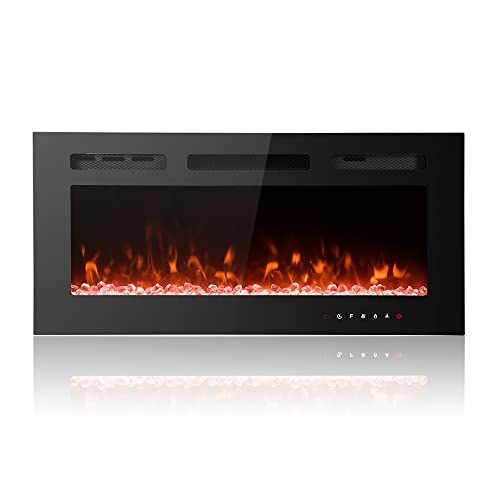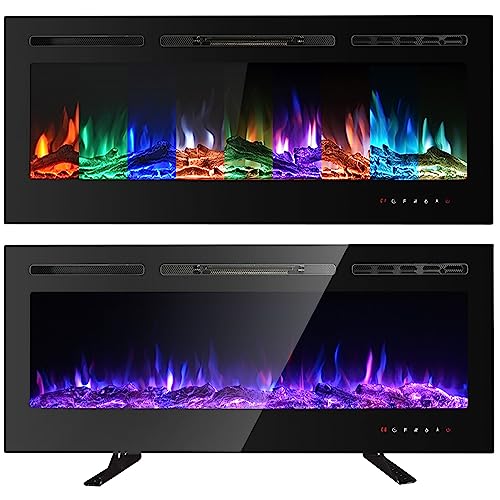Guide To Small Wood Burning Stove: The Intermediate Guide To Small Woo…

Basil
2025-01-21 13:09
8
0
본문
 Installing the Very Small Wood Burning Stove
Installing the Very Small Wood Burning StoveWood stoves are being put in increasingly in homes that are smaller and better insulated. The most compact wood burning stoves are the best for these spaces. They offer significant health benefits.
They also work well for caravans, yurts, sheds and shepherd's huts. However, it is important to remember that you must keep a safe distance between the stove and any combustible materials.
How do you install a small wood stove?
A wood burning stoves ideas-burning stove could be a great way to heat a small home without increasing the energy bill and without using petroleum. However, installing wood stoves can be daunting. There are many important steps that must be followed to ensure your stove is properly installed and safely. Before starting, make sure you have the proper tools and follow all the manufacturer's instructions. It is also a good idea to consult a professional who is certified.
The first step is to prepare the space in which the stove will be installed. This includes removing combustible materials and making the foundation for the hearth. Then, you can build a hearth and install the stove. A hearth is a layer of noncombustible, fire-resistant material that covers the floor underneath your stove. It also provides an adequate base for the heating tubes made of metal that help to carry smoke and odors from the house.
You can choose to use a pre-made hearth pad or make one yourself. The pad should be constructed out of fire-resistant tiles or concrete. The pad must be secured to the floor with high-temperature concrete, which can be purchased from home improvement stores. Make sure that the hearth is placed over the stove and is in compliance with side clearance requirements.
Next, you will need to decide which type of chimney pipe you want to use. You can choose between single wall or double wall black stove pipe(opens in a new tab). The choice will be determined by the distance between your stove and combustible material. The recommended distance should be based on the guidelines of the manufacturer and local building codes.
If you are unable to locate your stove within the recommended distances, then you can install heat shields to reduce the clearance required. It is recommended to check with your local fire department as well as your insurer to see if this is permitted.
Another option is to install a fan that blows hot air out of the room. This can help the stove to heat the area more evenly. Then, you can move your furniture closer to the fireplace and enjoy an inviting fireplace. Be sure to burn only dry, seasoned freestanding wood burning stove in your stove. The ash that is produced by burning wood could be harmful to your family members if you don't.
Space requirements
Wood stoves are a popular choice for a lot of people, but they have to be considered in terms of how much space they will require. The amount of space you need around your wood stove will depend on the size of your room as well as the heat output. If you don't have enough space for the stove, you may require a different heating source.
The space requirements of a small wood burning stove will vary based on the manufacturer, but in general, you should leave at least two feet (60 cm) between the stove and combustible material. This includes combustible walls and ceilings and ceilings, so ensure that you have enough space before installing your stove. Additionally, you should check with your insurance company to find out what their requirements are for the stove.
To minimize the space requirements of a wood stove that is small, you can utilize a venting system that has an flue pipe that is aninsulated. This will conserve space around the stove and also prevent smoke from escaping into the room. Check the manufacturer's guidelines prior to selecting a venting solution for your small wood burning stove.
You can also use an energy shield to reduce the required distance between your stove and combustible surfaces. These shields are typically available from the manufacturer of your stove, and can be attached to the sides or back of your wood stove. Additionally, you can also use double wall flue pipes to minimize the space you have to leave between your stove and combustible materials.
An excellent option for a small wood stove is to install an iron fireback. This can be purchased at an hardware store near you and is a great way to protect your walls from damage caused by fire. A fireback will also stop hot embers falling on your floor or furniture, and eliminate the necessity for chimney caps.
A small wood-burning stove can be an ideal choice for homes and apartments with little space. This type of stove is easy to operate and provides efficient heating for a much lower price than other options. Wood is also a renewable resource and is easily accessible locally.
Flue system
Flue systems work as a conduit for guiding smoke and gasses from the stove to outside your home. Without a flue, these gases could build up in the room, posing a health risk. They can also create a dangerous draught.
You should choose the flue system compatible with the dimensions of your stove and power output. The flue pipe should be at minimum 25 percent larger than the stove to allow for adequate draft and smoke circulation. The flue pipe must be properly and properly insulated. A properly insulated flue pipe reduces loss of heat and helps keep the temperature within the stove at a lower level, thereby increasing efficiency.
 You must also take into consideration the location where your tiny wood stove will be when choosing the flue. If you plan to utilize your stove as a mobile or caravan home, select a system which can be removed as the unit is moved. If you are planning to install your stove in a permanent home, you should choose an internal system. In this case, your flue pipe will be routed through the ceiling and wall of your home. You can also install an exterior twin wall flue system. These systems are simple to install and require less disruption to the interior of your home.
You must also take into consideration the location where your tiny wood stove will be when choosing the flue. If you plan to utilize your stove as a mobile or caravan home, select a system which can be removed as the unit is moved. If you are planning to install your stove in a permanent home, you should choose an internal system. In this case, your flue pipe will be routed through the ceiling and wall of your home. You can also install an exterior twin wall flue system. These systems are simple to install and require less disruption to the interior of your home.It is not recommended to set up an already constructed chimney on your tiny wood-burning stove. This can be costly and potentially dangerous if not done correctly. The best option is to install a flexi flue liner. They are available in a variety of sizes and grades and can be cut to the dimensions of your stove. The grade of the flue liner you select for your stove will determine the efficiency with which the gases and smoke are transported through the chimney.
It is crucial to adhere to UK building regulations when installing a flue system. These regulations outline specific requirements, such as the distance from combustibles and fire hazards, how the flue system is routed and the hearth size. It is also essential to install CO detectors in the area where the stove will be situated. The device will alert you when it detects a high amount of this gas with no smell.
Safety precautions
Wood stoves are an extremely popular method of heating your home however, if they're not properly installed or used they could ignite and cause fires. In fact, more than 4000 home fires are caused each year by freestanding wood burner woodburning stoves that have not been installed or operated according to manufacturer's guidelines. These fires can be prevented by following some simple safety precautions. This includes proper venting, avoiding burning trash and papers in the stove, as well as keeping pets and children away from the fireplace or wood stove.
A wood stove should be vented through a metal chimney that is at least of 1 meter above roof level. It should not be connected to a flue utilized by other appliances such as furnace or boiler, which could cause toxic carbon monoxide gas to leak into your home. In addition, the chimney must be checked on a regular basis to prevent creosote buildup and other potentially hazardous conditions.
The stove should be placed at least three metres from walls and furniture to avoid the buildup of smoke and heat in these areas. The stove should also be placed on a non-combustible surface. A professional mason should check the chimney and wood stove on a regular basis to make sure that the chimney is free of obstructions.
It is crucial to only use dried, seasoned wood in your wood stove. Wet or green wood is more difficult to burn, which causes inefficient combustion, and creates huge quantities of smoke. It may also cause the room to be filled with toxic toxins and smoke inhalation.
When starting a fire in the wood stove, it is crucial to only add a few pieces dry, seasoned wood at a time. Overloading the stove with wood can cause it to overheat and create the chimney fire. In addition garbage and paper should never be burned in a wood stove because they can release toxic fumes.
It is recommended to test the efficiency of a wood stove prior the winter season by burning two or three small pieces of seasoned wood for a few minutes. This will reveal any creosote or obstructions that might have built up in the chimney.

댓글목록0
댓글 포인트 안내